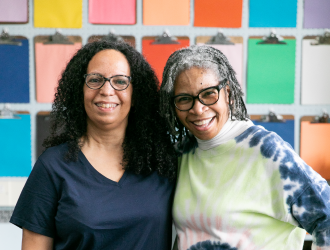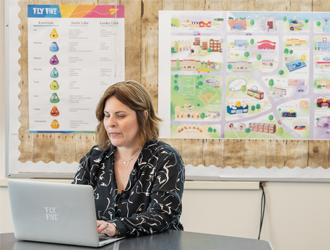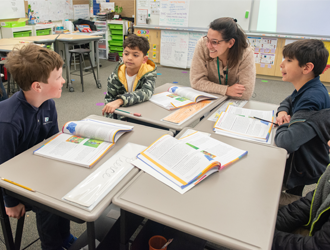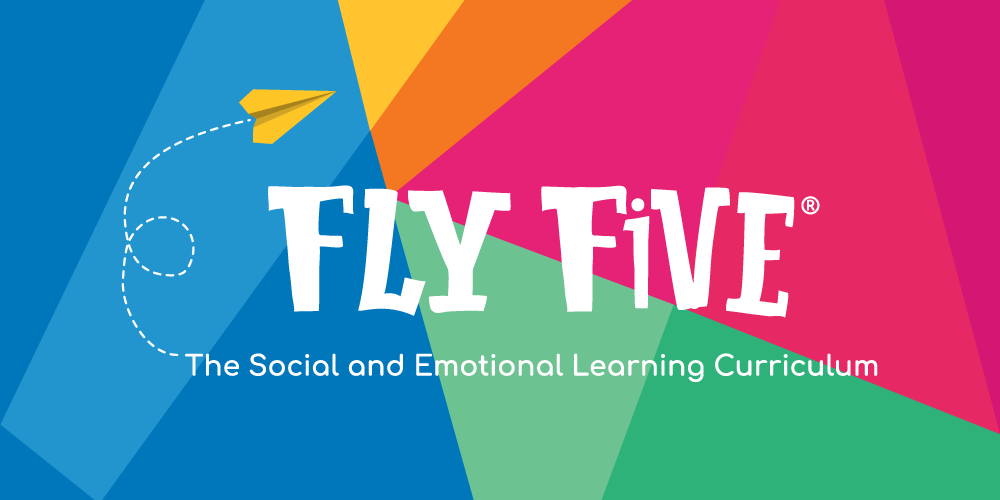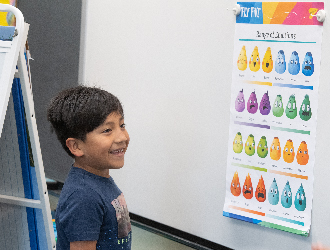Refining the Decision-Making Process for Students

Take a moment and think about your morning routine. What does it look like? Do you get up hours before you have to leave the house or log in to your online classroom for a leisurely morning, or do you prefer to get up, get ready, and get going? What did you have for breakfast, or prepare for your lunch? Although our routines may be so habitual they seem inevitable, they are actually a series of choices we make about how we live our lives. The way we take our coffee, our choice of career, starting a family—these are all decisions that impact us. Decisions come in all sizes and with varying degrees of impact, and developing a clear-cut decision-making process is essential for our own success as well as the success of our students.
Over the last year during the COVID-19 pandemic, students’ decision-making opportunities have likely looked different than ever before. With increased remote learning, new routines, and canceled extracurricular activities, the range of choices students made may have been limited to four walls of their living space. And now, as we inch our way toward the reopening of schools and resume learning as we once knew it, it’s likely that students are having many thoughts, feelings, and anxieties about how they will adapt yet again. Small decisions may feel large, and large decisions may feel overwhelming. This is an opportunity to refine students’ decision-making process, remind them that they are in control of their choices, and empower them to make positive decisions in preparation for life after COVID.

Decision-Making Matters
The decisions students make have a direct and indirect impact on their lives. Decision-making shapes students’ perception of themselves, influences their self-esteem, and affects overall satisfaction with their lives. Teaching students the steps necessary to make good decisions has been shown to increase their positive coping skills (Colakkadiolgu & Celik, 2016), which have been and will continue to be of paramount importance during life’s stressful periods. Students who are actively in the process of developing decision-making skills have been reported to be better listeners, show stronger organizational tendencies, and are better at delegating tasks in group work (Gregory & Clemen, 1999). The ability to make good decisions not only comes with ample benefits for students’ present and future satisfaction, it allows them the agency to imagine and then create a life that they’re proud of.
When teaching students about decision-making, it’s important to highlight the difference between cultivating a good decision-making process and obtaining good outcomes. Students must understand that there will be times that they employ a sound, well-thought-out decision-making process and don’t arrive at an ideal final outcome, and that’s okay (Gregory & Clemen, 1999). Consider, for example, a student who makes the decision to enroll in an advanced level math class with a particularly sought-after teacher. They dream of becoming an engineer, and even though the class might bring their GPA down, they’ve identified their goal and decided that this class is the right choice. However, when the class begins, the teacher has taken a leave of absence. The replacement teacher has a different teaching style, and the student struggles more than they anticipated. The student’s decision-making process, and subsequently the decision they made with the knowledge they had, was not erroneous. Now the student is faced with a whole new set of decisions to make, but they have their process to fall back on to continue on a successful path.
Students must acquire the tools they need to think critically, logically, and broadly through decisions, big and small, so they can feel confident they are making the best choices possible for themselves.

How to Foster Decision-Making Skills
Developing an intentional, critical decision-making process is crucial to ensuring that students see and utilize their power over their own lives. When students understand that they have choices, and can see that nearly everything they do, feel, and achieve is a result of their decisions, they will be better able to chart their course toward a bright future.
Making decisions involves assessing a number of different options, reasoning through why one option should be the decision that is made, and finally, making a choice that should lead to the desired outcome (Lunenberg, 2010). The decisions we make are influenced by many things, such as our values and desired outcomes (Gregory & Clemen, 1999), our willingness to take risks, our age and past experiences, our biases, beliefs, and commitment to the outcome we are hoping for (Dietrich, 2010). Understanding the context in which our students are making decisions can be crucial in guiding them toward making good decisions. Especially during difficult times, like the pandemic, it can be hard to envision how decisions we make now might ripple into the coming years. But this can be a prime time for students to reflect on their hopes and goals, past decisions, and the way that their values, beliefs, and experiences have influenced those decisions.
To empower students to develop an effective decision-making process, we can outline the following steps (Lunenberg, 2010; UMass, n.d.):
- Identify the decision. What is the choice you need to make? Why do you need to make it? What’s at stake?
- Gather information. This can be an internal gathering: How are you feeling about the decision? What are your initial thoughts, hopes, or qualms? Or it can be an external gathering: What background knowledge do you need? Do you need to consult another person, a book, or do any research?
- Identify alternatives. What are the available paths to making a decision? Is this choice the only choice? Use your imagination and create a list of possible options.
- Weigh the evidence. Using the information you’ve gathered—your research, your hopes, your emotions—to explore each path. What are the pros and cons? Which option seems to yield the best results for you? Prioritize your options.
- Choose among alternatives. Take a deep breath and make a decision.
- Take action. What small step do you need to take to enact your decision? This will look different depending on the nature of your choice.
- Review your decision and the potential consequences. After some time has passed and you’ve taken action, ask yourself what went well. Are you closer to where you need to be? Have you resolved any problems or managed any unintended consequences?
Practice this process in your classroom with big and small and hypothetical and real scenarios. Highlight a situation in a story or a historical event and have students go through these seven steps to decide which decisions they would make. Would they make the same choice as the character? Do they think that the people involved in the historical event went through this process? The more students are able to practice thinking about decisions through these steps, the more they will internalize them and be apt to use it without exerting too much effort. They will become naturally adept at making good decisions over time.
After making a decision, students will likely feel different emotions. Depending upon the decision, they may feel excited or hopeful, sad or regretful, or even disappointed or dissatisfied (Dietrich, 2010). All of these feelings are normal and acceptable. Especially as students get older and face more complex choices that can come with excitement and sacrifice, students must be able to trust their process. Sometimes good decisions don’t feel so good, and sometimes bad decisions are much more pleasing in the moment. Yet as students internalize the above steps and sharpen their ability to look toward the future when making decisions in the present, they will be increasingly able to make positive choices in complex situations.

Decision-Making Activities
As adults, we understand that decision-making can be challenging. We have the benefit of experience and time, and we can reflect upon how decisions we made when we were fifteen, eighteen, and twenty are still relevant in some ways today. Without years of experience to draw from, students may struggle to see how the choices they make as kids can affect them later. We can implement activities in our virtual and in-person classrooms that help students explore their decision-making process in fun and engaging ways.
- Incorporate mindfulness into the process. Think of a time you had to make a tough choice. How did you feel as you worked through your options? How did you feel after? Oftentimes, positive choices may come with a sacrifice, a compromise, or even a loss of some sort. The same is true for students, but they may not have the perspective or vocabulary to understand that quite yet. After students make a decision, give them a few moments to reflect on how they are feeling. Have them name the feeling and get curious as to why they are feeling that way. When students are able to name and process their emotions, they will be able to make difficult decisions and manage the complex emotions in a healthy, constructive manner.
- Identify future goals. A core component of making positive choices for oneself is understanding one’s own objectives (Gregory & Clemen, 2010). Get creative when exploring goals: have students draw, paint, or write a song or poem about who they want to be in one year, five years, and as an adult. Try having the class work together to come up with a classroom goal, and turn it into a treasure map. The goal is the “treasure” and students must work together in groups to make the right decisions that will lead the class closer to the “X marks the spot!”
- Plan an “opposite hour” (or day!) where students do routine activities differently. This can mean writing or raising their hand with their non-dominant one, choosing a different desk, or typing during their virtual class in a different font. While these are small changes, they can highlight how even tasks that are routine are an opportunity for students to make choices. In lessons, during the opposite hour, give students the choice to sit or stand. Allow them to choose whether they want an interactive lesson or an individual one. These choices come with higher stakes than just changing up a small routine, and students should have time to reflect on how their choices impacted their learning. What was it like to stand for a whole lesson? How did the learning style they chose that day impact their experience with the material? Opposite hour can be scaled into a whole day of experimenting with choices, which not only encourages students to use their decision-making process in real-time, but also strengthens their self-knowledge and self-awareness.
As a teachable skill that is important for cognitive and psychological growth, decision-making is an important toolkit for our students to assemble from a young age (Colakkadioglu & Celik, 2016). As we get older, the impact of our decisions accumulates into our lifestyle, our habits, and even our happiness. With the light at the end of the pandemic tunnel visible, however faint, we can seize the opportunity to refine students’ decision-making process and set them up for success. What goals do they have for themselves over the summer? How can they make small, positive choices each day to prepare them for life beyond the pandemic? Now is the time to pause, reflect, and work with our students to ensure they understand the power they hold over their own lives and outline how they can make choices that will bring them health, success, and happiness.

References
- Colakkadioglu, O., & Celik, D. B. (2016). The effect of decision-making skill training programs on self-esteem and decision-making styles. Eurasian Journal of Educational Research, (65), 259–276. http://dx.doi.org/10.14689/ejer.2016.65.15
- Dietrich, C. (2010). Decision making: Factors that influence decision making, heuristics used, and decision outcomes. Inquiries, 2(02), http://www.inquiriesjournal.com/articles/180/2/decision-making-factors-that-influence-decision-making-heuristics-used-and-decision-outcomes
- Gregory, R. S., & Clemen, R. T. (1999). Improving students’ decision making skills. Decision Research. http://www.mentalhealthpromotion.net/resources/improving-students-decision-making-skills.pdf.
- Lunenberg, F. C. (2010). The decision making process. National Forum of Educational Administration and Supervision Journal, 27(4). http://www.nationalforum.com/Electronic%20Journal%20Volumes/Lunenburg,
%20Fred%20C.%20The%20Decision%20Making%20Process%20NFEASJ
%20V27%20N4%202010.pdf - UMass Dartmouth. (n.d.). Decision-making process. https://www.umassd.edu/fycm/decision-making/process/



